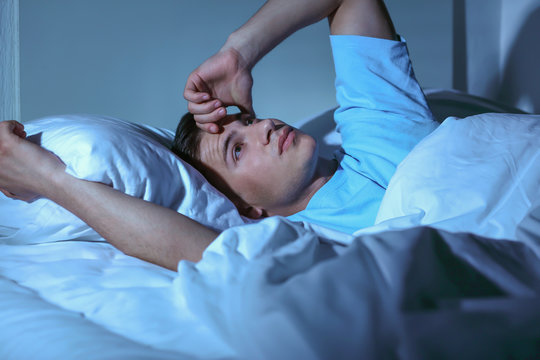Symptoms and Treatment for Insomnia
Even though insomnia may be quite upsetting, there are easy remedies for it that can be used in 12 minutes or less. Learn 10 tried-and-true techniques for falling asleep quickly and remaining asleep for the whole night.
Describe Insomnia
An inability to fall asleep or remain asleep is a defining feature of the sleep disorder known as insomnia. It might have a brief duration and be acute or chronic. In contrast to acute insomnia, which typically lasts less than two weeks, chronic insomnia lasts for two weeks or more. The best treatment for insomnia or restlessness is blue zopiclone 7.5 mg.
What symptoms of sleeplessness are there?
The most common symptoms of insomnia include the following:
- Not able to go to sleep
- Very early wake-up and difficulty falling back asleep
- Sleep devoid of restorative qualities
- Fatigue throughout the day
- Intense Feeling
- Difficulty concentrating and recalling details
- Increased chance of accidents
Why is it so crucial to get adequate sleep?
Sleep is vital for maintaining both physical and mental well-being. A host of health problems, including the following, are more likely to result from little sleep:
- The Bulky
- Cardiac ailments
- Diabetes-Related Stroke
- Increased blood pressure
- Depressive conditions
- Uneasiness
- Not able to concentrate
- Decline in memory increases the chance of accidents
- How can a 12-minute insomnia remedy benefit you?
- Numerous benefits arise from a restful night’s sleep, including:
- Improved attitude Increased energy
- Greater mental ability
- Reduced likelihood of chronic disease development
- Increased safety Higher standard of living
The Fix for the Sleep Issue
It is important to keep in mind that insomnia cannot always be cured in 12 minutes. However, a lot of people might benefit from the blog overview’s recommendations for improving the quality of their sleep.
You listed several doable strategies for improving the quality of your sleep, including relaxation techniques and lifestyle changes. A summary of each is given below:
Techniques for Unwinding
Deep breathing:
Deep breathing might help you relax and slow down your pulse rate. For a deep breathing exercise, place one hand on your stomach and the other on your chest while lying comfortably on your back. Breathe in deeply and slowly through your nose, allowing your tummy to rise. As you gradually exhale through your lips, let your stomach descend. Continue taking deep, gentle breaths for five to ten minutes.
Tensing and relaxing different body muscle groups may lead to gradual muscular relaxation. Working from your toes to your head is a gradual muscular relaxation method. For five to ten seconds, tense each muscle group while taking deep breaths. After that, exhale and give your muscles a 10- to 20-second rest.
Meditating:
The technique of meditation involves focusing your attention on the present moment. A fundamental meditation strategy for insomnia is to focus on your breathing, however, there are many other types of meditation as well. To accomplish this, choose a comfortable position and close your eyes while sitting or lying down. Observe how your chest or stomach rises and falls as you concentrate on your breathing. Every time your mind wanders, gently bring it back to your breathing. Keep meditating for five to ten minutes.
For example:
Using your imagination to create a calm and peaceful environment is a kind of relaxation known as visualization. To practice visualization, close your eyes and visualize a safe, comfortable place for yourself. This may be a beach a forest, or any other tranquil place you like. Imagine all the sights, sounds, smells, and emotions associated with this place. Think about this situation for a duration of five to ten minutes.
Lifestyle modifications
Create a soothing bedtime routine:
Give yourself thirty to sixty minutes to unwind before bed. This may be curling up with a good book, taking a warm bath, or listening to soothing music. Avoid using devices or watching TV an hour before bedtime since the blue light they produce might cause sleep disturbances.
Before going to bed, avoid coffee and alcohol:
Sleep disturbances may be caused by alcohol and coffee. Avoid drinking alcohol an hour before going to bed and coffee in the afternoon and evening.
Make sure your bedroom is dark, silent, and chilly:
Darkness promotes the production of melatonin (10 mg), a hormone that helps regulate sleep. Make sure your bedroom is quiet and dark since light and noise might disrupt your sleep.
If after trying the following relaxing techniques and making lifestyle changes you still can’t seem to get sleep, see your doctor. There might be a medical condition underpinning your sleeplessness, or you could need additional help setting up a sleep plan.
Pharmaceuticals
Numerous medications are available to treat insomnia. Among the medications most often used are:
The benzodiazepines:
The central nervous system is slowed down by benzodiazepines, a class of sedatives. Although they are effective in treating insomnia, they have drawbacks such as tiredness, dizziness, and memory loss, as well as the possibility of addiction.
Adrenaline-free:
Non-benzodiazepines are relatively new sedatives that have similar effects as benzodiazepines but are less prone to lead to addiction or side effects. They also have a lower chance of causing rebound insomnia, which is a condition in which symptoms get worse after the medication is stopped. Zopisign 10mg is a commonly used non-benzodiazepine medicine for treating insomnia. Visit Smartfinil.net for more information.
Inhibitors of depression:
Some antidepressants have sedative properties, which makes them useful for treating insomnia. They are especially beneficial for those whose anxiety or depression are the cause of their insomnia.

